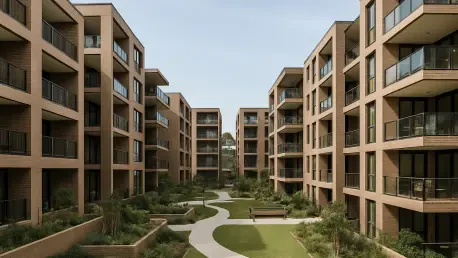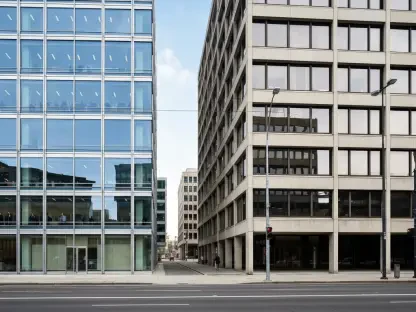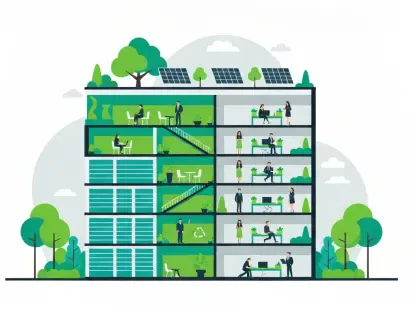In the face of mounting housing shortages across Australia, New South Wales (NSW) has taken a bold step to address the crisis by making permanent tax concessions for build-to-rent (BTR) developments, a move designed to stimulate the supply of rental housing and position the state as a frontrunner in this emerging sector. With demand for diverse housing options soaring, the government’s decision to indefinitely extend a 50 percent reduction in assessable land value for eligible BTR projects signals a long-term commitment to easing the burden on renters and developers alike. This policy shift not only aims to attract investment but also underscores a broader recognition of BTR as a critical tool in tackling supply challenges. As urban populations grow and affordability remains a pressing concern, the focus on purpose-built rental housing offers a promising avenue to diversify the market and provide stability for tenants.
Policy Changes and Incentives
A Permanent Commitment to BTR Growth
The NSW Government has introduced a transformative bill that cements a significant tax incentive for the build-to-rent sector, ensuring a 50 percent reduction in assessable land value for qualifying new projects with no expiration date. This replaces a previous deadline set for 2039, offering developers and investors unprecedented certainty, provided construction commenced after July 1, 2020, and the property remains undivided for at least 15 years. Such a policy is crafted to encourage the creation of high-quality rental homes across the state, addressing the acute need for diverse housing stock. By removing temporal limits on the concession, the government aims to foster a stable environment where long-term planning for BTR projects can thrive. This legislative change is seen as a direct response to industry calls for consistency, ensuring that financial barriers are minimized for those looking to enter or expand within this space.
Industry Reactions to Sustained Support
Feedback from industry stakeholders highlights strong approval of the NSW Government’s decision to make these tax concessions permanent, viewing it as a pivotal step toward unlocking housing delivery. Representatives from property councils have lauded the responsiveness to sector needs, emphasizing that such measures dismantle critical obstacles to development. Analysts also note that while some developers had anticipated an extension, the indefinite nature of the policy significantly bolsters confidence for future project pipelines. This certainty is expected to drive investment beyond the immediate term, potentially reshaping the rental landscape in NSW. The positive sentiment reflects a broader trend of supportive housing policies, with experts suggesting that this could inspire similar initiatives in other regions. The focus now shifts to how quickly these incentives translate into tangible increases in BTR units across urban and regional areas.
Competitive Landscape and Future Outlook
Comparing BTR Progress Across States
When examining the build-to-rent landscape across Australia, stark differences emerge in the progress of various states, with Victoria currently leading the charge by a wide margin. Since 2018, Victoria has seen 25,830 BTR units completed, under construction, or in the pipeline, far outpacing NSW, which reports 22,025 units. Queensland, though smaller in total numbers with 16,279 units, surpasses NSW on a per capita basis, highlighting a more efficient market penetration relative to population. Despite trailing behind, NSW is poised for growth with initiatives like the Transport Oriented Development (TOD) program, which aims to unlock prime sites for BTR projects in Sydney. This competitive dynamic illustrates how states are leveraging policy tools to attract investment, with NSW’s recent tax changes serving as a strategic move to close the gap. The data paints a picture of a national race to address housing demand through innovative rental models.
Projections and Complementary Strategies
Looking ahead, forecasts for the BTR sector in NSW are optimistic, with annual unit starts projected to climb from 6,500 currently to 11,900 by 2030, marking a substantial increase in activity. This growth trajectory is supported not only by the permanent tax concessions but also by complementary policies such as TODs and zoning reforms that facilitate higher density in key areas. Experts suggest that while the land tax reduction is a cornerstone of this strategy, other measures like TODs may yield more immediate impacts on supply by streamlining access to development sites. The combination of these efforts reflects a holistic approach to housing challenges, acknowledging that no single policy can fully address the shortage. Amid a slight slowdown in activity last year due to policy uncertainty, the outlook has since brightened, with expectations of further legislative backing during national housing accord discussions. This multifaceted strategy positions NSW to make significant strides in the coming years.
Reflecting on a Strategic Shift
Reflecting on the initiatives taken, the NSW Government’s decision to lock in tax concessions for build-to-rent developments stands as a defining moment in the state’s housing policy history. This move, paired with programs like Transport Oriented Development, lays a robust foundation for increasing rental housing supply. As stakeholders celebrate the certainty provided to investors, the competitive gap with states like Victoria and Queensland narrows through targeted growth projections. The emphasis on diverse policy tools demonstrates a comprehensive effort to tackle housing shortages. Moving forward, the focus should pivot to monitoring the pace at which these policies translate into completed units, ensuring that bureaucratic hurdles do not impede progress. Additionally, collaboration across government levels could further amplify impact, potentially setting a benchmark for national housing strategies. Exploring innovative financing models alongside existing incentives might also accelerate development, ensuring that the momentum gained is sustained for long-term housing security.









